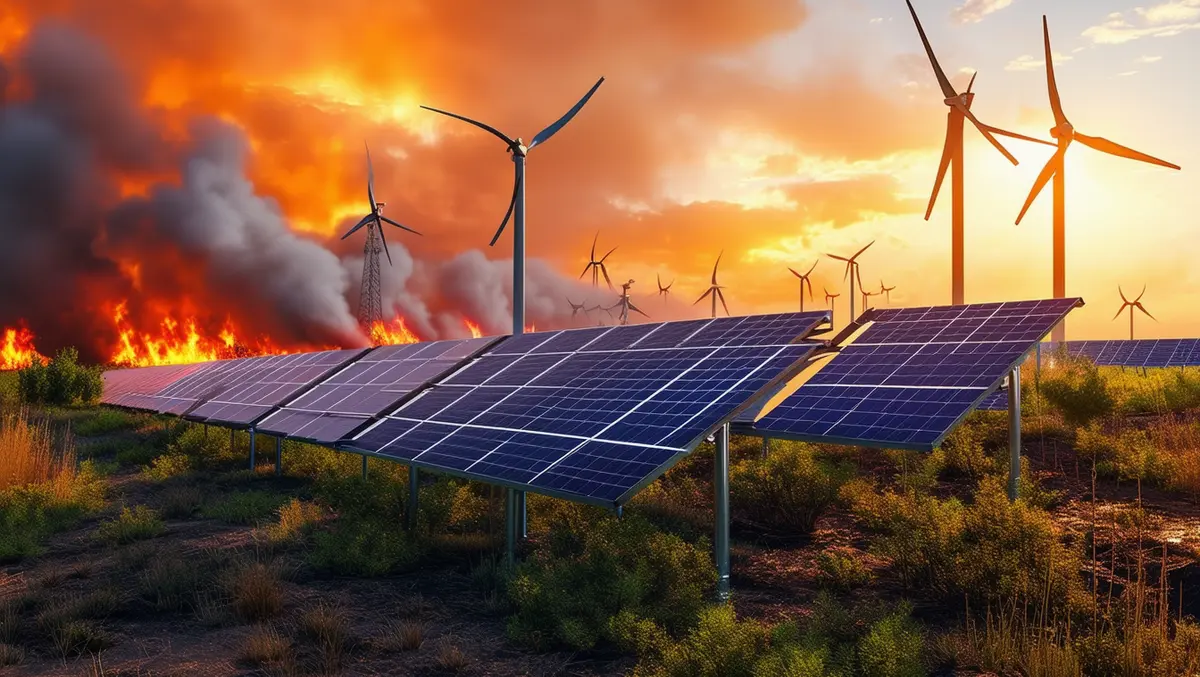
Firetrace report warns of fire risk in renewable projects
The recent surge in the deployment of co-located renewable energy projects in the United States has highlighted persistent gaps in fire risk management.
Despite significant progress in addressing battery-related fire risks, a new report from Firetrace International reveals that solar and wind components remain under-protected. Entitled "Double Indemnity: How to tackle fire risk at co-located renewables projects," the report was released as renewable energy assets saw a 90% increase in deployment during 2023, with battery-plus-solar installations accounting for 10.45GW.
According to the report, the deployment of co-located renewables has been embraced as one of the key strategies in transitioning to clean energy production. The US Energy Information Administration (EIA) forecasts that co-located projects, particularly those integrating battery and solar technologies, will comprise approximately 81% of new electricity generation capacity this year. While developers are keenly aware of fire risks associated with battery systems, similar precautions have not been extended to wind or solar assets.
Solar and wind infrastructures themselves pose substantial fire hazards, which become even more significant when these technologies are combined with battery storage in co-located projects. The report identifies that, though less frequent than battery fires, catastrophic fires occur in 1 in 2000 wind turbines. Solar farm fires are also believed to be underreported, compounding the risk. Consequently, renewable energy projects that do not adopt comprehensive fire risk management strategies across all asset types are only mitigating a portion of the overall risk. This leaves operators vulnerable to substantial financial losses.
Potential losses from battery fires can reach up to USD $2 million, while losses from wind turbine fires can escalate to USD $9 million per individual asset. These figures exclude additional costs related to project downtime and reputational damage. The discrepancy in fire risk management standards across different states exacerbates the situation. Local regulations vary significantly, creating an unclear landscape for developers, owners, and operators regarding the required safety measures.
Brian Cashion, Director of Engineering at Firetrace International, commented on the evolving industry landscape. "Last year, the industry's awareness of energy storage fire risk grew substantially, partly driven by delays and cancellations of projects due to fire concerns. The International Association of Fire Chiefs also ran a fire risk campaign for energy storage, demonstrating a committed attitude to managing the hazards associated with batteries. What this new report illustrates, though, is the prevailing, but mistaken, belief that batteries represent the only high-profile fire risk in co-located renewables projects," said Cashion.
The report by Firetrace International recommends four key steps to mitigate fire risks in co-located renewable projects: extending battery system fire precautions to co-located assets, conducting independent fire risk assessments of the site, familiarising oneself with local fire regulations and installing appropriate fire suppression systems, and scheduling the testing of operational assets to assess wear and tear. These measures aim to ensure comprehensive protection across all components of renewable energy projects.
"Over the last few years at Firetrace, we have drawn attention to our experience of underestimated fire risk on wind farms in our 2021 report, and on solar farms in our 2022 report. It is even more imperative now, with more and more battery plus solar or wind projects coming online, to tackle these avoidable losses with sufficient fire suppression systems," Cashion added. "The only way to fully protect co-located renewables infrastructure, revenue, and reputation is to take equal care of all the assets in the project rather than solely taking care of the most likely fire hazard."


